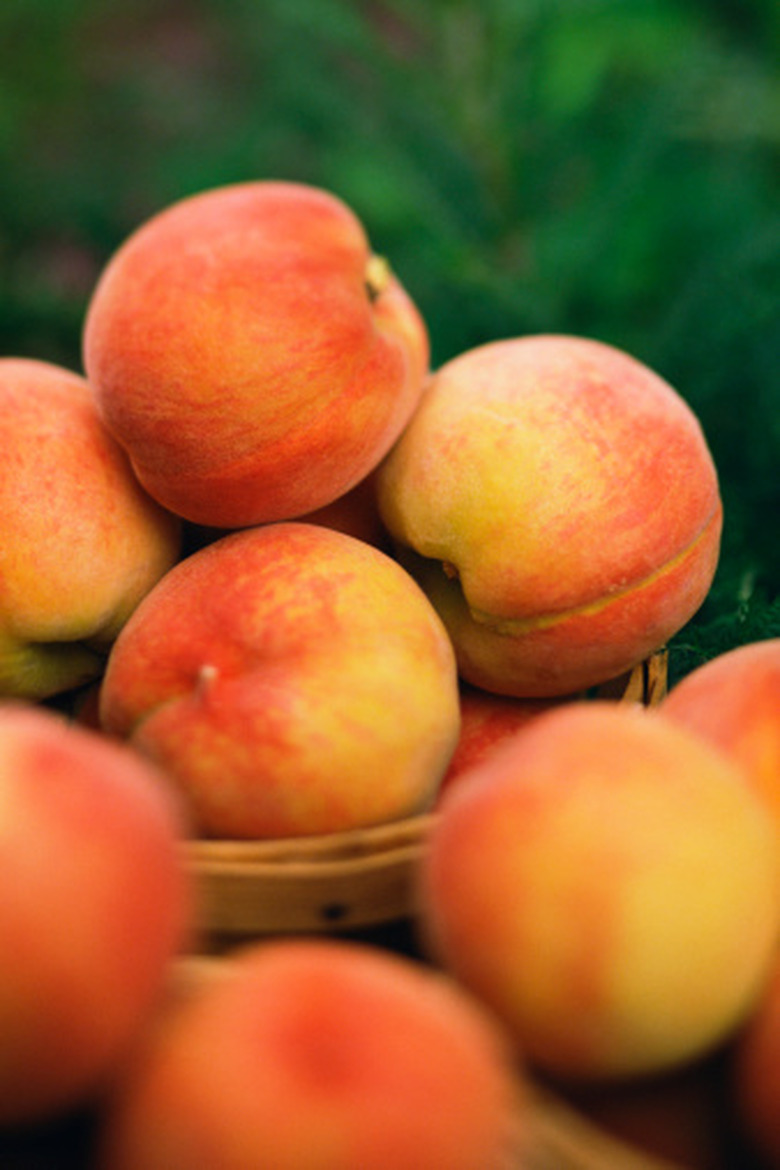When To Spray For Worms In Peach Trees?
Spraying for worms in peach trees helps protect the peaches and the tree from larval insects that damage and weaken the tree in addition to spreading disease. Applying the spray at the right time makes the pesticide more effective.
Early Spring
Preventive sprays applied in early spring kill off any eggs and insects that will be laying eggs, so early spring applications reduce the population of worms and larval insects before they can do damage. Spraying while the tree is still dormant protects new growth from damage by the pesticide.
Blooms
Spraying when the tree is in bloom, before the petals have begun falling from the tree, protects the peach tree from various insects, fungi and worm-like larvae. Pesticides applied during this time target a different problem than an earlier application.
Before Harvest
Spraying after the fruit have formed a husk and before the harvest helps to control a variety of insects and worm-like larvae, including Japanese beetles. Using pesticides during this time protects the fully formed fruit from damage and keeps the harvest healthy.
- Spraying for worms in peach trees helps protect the peaches and the tree from larval insects that damage and weaken the tree in addition to spreading disease.
- Using pesticides during this time protects the fully formed fruit from damage and keeps the harvest healthy.
Spray For Worms In Peach Trees?
Three types of leafroller larvae may infest peach trees. When disturbed, leafrollers often drop from the foliage on the end of long, silken threads. Omnivorous leafrollers have light-colored bodies and black or dark brown heads. Sprays of dormant oil, narrow range oil or pesticides formulated with spinosad while the peach trees are in their dormant stage should be followed by sprays in early spring that target the larvae. A spray of spinosad or Bacillus thuringiensis (Bt) while the tree is in bloom is effective on young larvae. Follow label directions carefully. If the worms on your peach tree are tiny and white with a black head, they are probably the immature larvae of the peach twig borer. Older larvae are 1/2 inch long and cocoa colored, with light and dark bands. They hatch from eggs laid in spring and bore into graft unions and crotches of young trees.
- Three types of leafroller larvae may infest peach trees.
- If the worms on your peach tree are tiny and white with a black head, they are probably the immature larvae of the peach twig borer.
References
- University of Delaware; Peaches, Nectarine, and Cherry Spray Schedule for Pests in the Home Orchards; Bob Mulrooney et. al.; April 2003
- Texas A&M University; Herman Auer Answers Your Questions on Peaches and Plums; Herman Auer
- UC IPM Online: Fruittree Leafroller
- UC IPM Online: Obliquebanded Leafroller
- UC IPM Online: Omnivorous Leafroller
- UC IPM Online: Peach Twig Borer
- UC IPM Online: Oriental Fruit Moth
- UC IPM Online: American Plum Borer
- UC IPM Online: Peach — Year Around IPM Program
- UC IPM Online: Pests in Gardens and Landscapes — Landscape and Garden Pesticides
